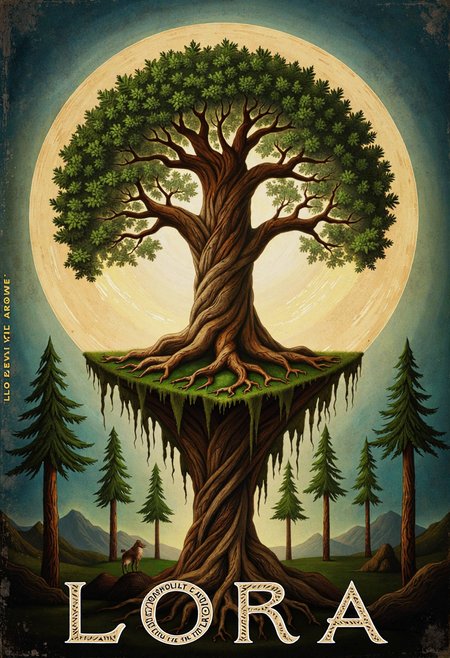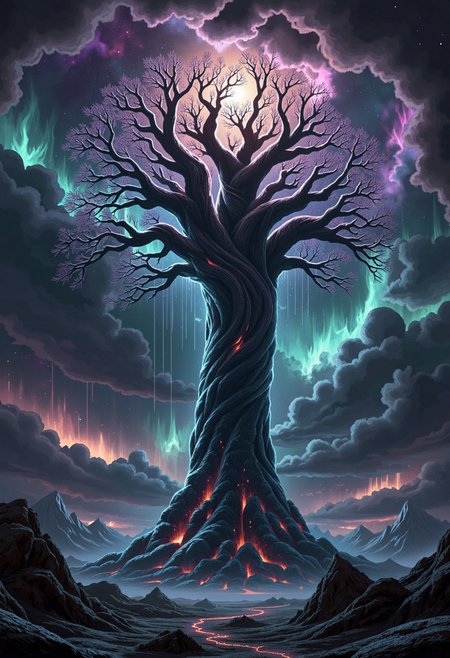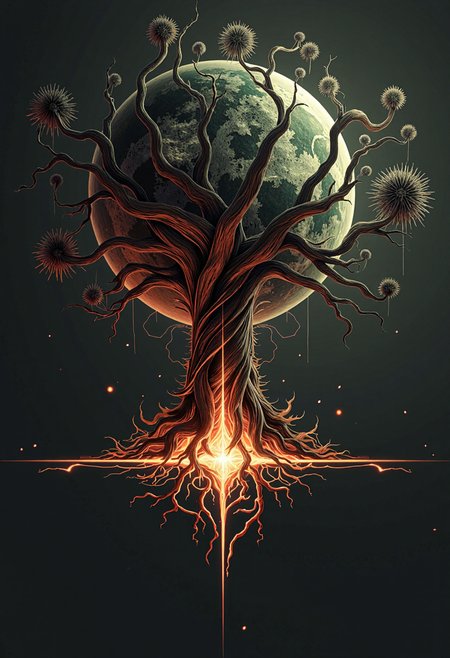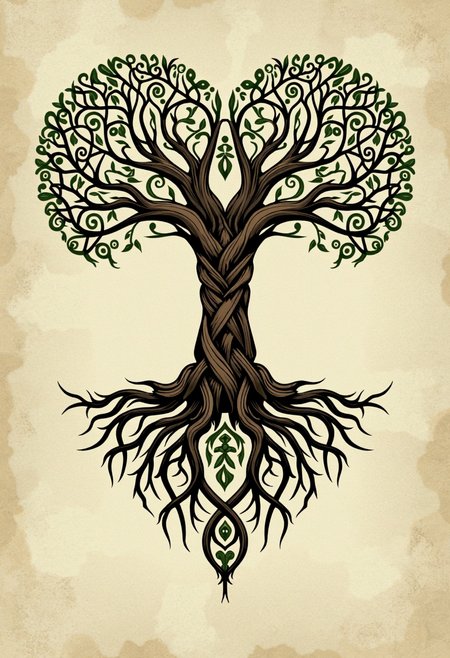The Mythical "Tree of Life" is a concept found in many cultures, representing a sacred connection between heaven, earth, and the underworld. The most famous example is the Norse tree, Yggdrasil. A colossal ash tree that links the nine realms of the cosmos.
Examples from different cultures
Norse: Yggdrasil, the World Tree, is a giant ash tree whose branches and roots connect the Nine Worlds. It is watched over by various creatures, including an eagle and the squirrel Ratatosk.
Egyptian: In ancient Egypt, the Tamarisk or Acacia tree was considered a tree of life, with four rivers flowing from its base, each corresponding to a cardinal direction.
Zoroastrian: The Gaokerna tree grew from the body of a primeval cow. It had a bird, the Simurgh, living in its branches, which spread seeds that would give life to all plants on earth.
Celtic: Sacred trees were placed in the center of settlements to act as a connection to the otherworld and a site of spiritual significance.
Jewish Kabbalah: The Tree of Life is a diagram of ten sephirot (divine attributes) that represent different aspects of God.
Christian: In Christian theology, the tree of life is often associated with Jesus and eternal life. It is also mentioned in the Book of Mormon, where it symbolizes the love of God.




